Have you ever felt self-conscious about the shape or position of your earlobes? Are you considering cosmetic surgery or plastic surgery to address this concern? Maybe they have small ears that stick out a bit too much, or perhaps they have an ear deformity with an unusual shape that bothers you. In such cases, cosmetic surgery can help correct the prominent ear and enhance their appearance. If you have congenital ear deformities or are unhappy with the appearance of your earlobe, then otoplasty, a surgical correction, might be the solution you’ve been seeking.
Otoplasty is a surgical procedure specifically designed to correct the appearance of protruding or misshapen ears, including deformities in the earlobe, mastoid, and concha. It involves making incisions behind the earlobe to reshape the mastoid cartilage and create a more balanced and aesthetically pleasing look. The primary indication for this cosmetic procedure is to address concerns related to the earlobe, mastoid, and pinna, providing individuals with a boost in self-confidence. It is recommended to consult a medical practitioner for this procedure.
Imagine confidently wearing your hair up without worrying about others noticing your ears, earlobes, mastoids, or pinna. Otoplasty can make that dream a reality by improving the overall harmony and balance of your facial features, especially for individuals with prominent ear or congenital ear deformities. This procedure can help address issues with the earlobe and correct any deformity. Whether it’s due to genetics, injury, or a deformity of the earlobe, otoplasty offers a way to transform your appearance and enhance your self-esteem. Otoplasty is a surgical procedure that can correct the shape and position of the pinna, or outer ear, using sutures.
So if you’ve been considering otoplasty, a procedure performed by a medical practitioner, as an option for addressing any issues with your earlobe, pinna, or concha, keep reading!
Understanding the intricate anatomy of the ear is crucial. The outer ear, also known as the external ear, is composed of cartilage covered by skin. It consists of the earlobe, concha, pinna, and helix. This unique structure allows for reshaping during otoplasty procedures. By modifying the shape and position of the earlobe, concha, pinna, and helix, surgeons can help patients achieve their desired aesthetic goals.
One of the key anatomical structures involved in otoplasty is the helix of the concha, which is part of the external ear or pinna. This structure plays a crucial role in shaping the head. The helix, also known as the pinna or outer edge of the ear, includes the prominent rim that runs along the concha. The shape and contour of the concha, pinna, helix, and head greatly influence the overall appearance of the ear. During otoplasty, surgeons may reshape or reposition the helix, which is the external ear’s concha, to create a more balanced and proportionate look for the pinna on the head.
Another important structure of the external ear is the antihelix, which lies just inside the helix and is located on the pinna of the head. The antihelix of the concha and pinna helps define the natural folds and contours of the ear, contributing to the overall shape of the head. In some cases, individuals may have a less pronounced antihelix and a more prominent pinna and concha, resulting in what is commonly referred to as “prominent ears.” Otoplasty can address this issue by enhancing or recreating these natural folds on the head to achieve a more aesthetically pleasing result.
The concha, also known as the pinna, is yet another significant component of the ear anatomy involved in otoplasty procedures. It is located on the side of the head. The concha, also known as the pinna, is a concave depression located at the center part of our ears. It is an important feature of the head. Sometimes individuals may have overly large or protruding conchas, causing them distress about their appearance. This can be due to the size or shape of their pinna or head. Through otoplasty techniques such as conchal reduction or reshaping, surgeons can help bring balance and symmetry to the external ear, specifically the pinna, and the head.
Lastly, we cannot overlook one’s concern about their earlobes and pinna during an otoplasty procedure. It is important to address any issues with the shape or position of the pinna and head to ensure a successful outcome. Although often associated with earrings and fashion choices, earlobes and the pinna play a role in overall facial harmony as well. The shape and size of the head also contribute to this harmony. Some individuals may have elongated or disproportionate lobes of the external ear, also known as the pinna, that they wish to correct through otoplasty. This surgical procedure aims to reshape the pinna to achieve a more balanced appearance in relation to the head. Surgeons can reshape or resize the pinna and earlobes to achieve a more balanced and aesthetically pleasing appearance.
Understanding the intricacies of ear anatomy, specifically the pinna, is crucial for both surgeons and patients. Surgeons rely on their knowledge of ear anatomy, including the pinna, to determine the most appropriate techniques for each individual. By carefully assessing the patient’s unique ear structure, they can tailor the pinna procedure to achieve optimal results. This understanding also allows surgeons to manage patients’ expectations by discussing realistic outcomes based on their specific anatomical features, such as the external ear or pinna.
For patients considering otoplasty, having an understanding of ear anatomy, including the pinna, is equally important. It helps them grasp the potential changes that can be achieved through external ear surgery and set realistic expectations. By knowing which structures of the external ear are involved in otoplasty, individuals can better communicate their desires with their surgeon and actively participate in decision-making regarding their procedure.
Otoplasty, also known as ear surgery, is a procedure designed to correct ear deformities and improve the appearance of protruding or asymmetrical ears. While otoplasty can be performed on individuals of various ages, there are certain factors that determine who makes an ideal candidate for this procedure, particularly those with concerns related to the external ear.
One of the key considerations when determining if someone is a suitable candidate for otoplasty is their age and the condition of their external ear. Generally, children above the age of 5 are considered good candidates because by this time, their ears have typically reached full development. This ensures that any structural issues with the ears have stabilized and allows for more accurate surgical planning.
For adults seeking otoplasty, it is important to have fully developed ears as well. This means that the cartilage in the ear has stopped growing and has achieved its final shape. Adults with protruding or asymmetrical ears due to genetics or trauma may find great benefits from undergoing otoplasty.
Another crucial aspect in determining candidacy for otoplasty, which is a surgical procedure to reshape the external ear, is good overall health. Before undergoing any surgical procedure, it is essential to ensure that the individual’s external ear is in good physical condition. This helps minimize potential risks associated with anesthesia and surgery of the external ear itself while promoting optimal healing after the procedure.
Candidates should disclose any pre-existing medical conditions to their surgeon during consultation so that appropriate precautions can be taken. It’s important to note that certain medical conditions may increase the risk of complications during or after surgery, making it necessary to evaluate each case individually.
Having realistic expectations about what can be achieved through otoplasty is vital for ideal candidates. While this procedure can significantly improve the appearance of the ears, it’s important to understand its limitations. Otoplasty can correct ear deformities, such as protruding or asymmetrical ears, but it cannot change the fundamental structure of the ear or alter hearing abilities.
During the consultation process, the surgeon will discuss the individual’s goals and provide a realistic assessment of what can be achieved through otoplasty. This helps manage expectations and ensures that candidates are fully informed before making a decision.
Otoplasty, like any surgical procedure, carries risks and potential complications that patients should be aware of. While the majority of otoplasty surgeries are successful with minimal complications, it is important to understand the possible risks involved before undergoing the procedure.
One common side effect of otoplasty surgery is temporary numbness or sensitivity around the surgical site. This occurs as a result of the manipulation and repositioning of the ear cartilage during the procedure. However, it is essential to note that this side effect typically resolves on its own over time.
While rare, there are specific complications associated with otoplasty surgery that patients should be mindful of. These include scarring, asymmetry in ear appearance, recurrence of ear prominence, or dissatisfaction with the final results.
Scarring can occur as a result of poor wound healing or an individual’s tendency to develop keloid scars. However, skilled surgeons take great care to minimize visible scarring by placing incisions in inconspicuous areas behind or within natural creases of the ear.
Another possible complication is asymmetry in ear appearance. Although surgeons strive for symmetrical results, factors such as variations in healing and individual anatomical differences can contribute to slight differences between both ears after surgery. In most cases, these differences are minor and not noticeable to others.
Recurrence of ear prominence may occur if the sutures used during surgery fail to hold properly or if there is inadequate reshaping and reinforcement of the cartilage framework. This complication can usually be addressed through revision surgery if necessary.
Lastly, dissatisfaction with results is a potential complication that some individuals may experience after otoplasty surgery. It is crucial for patients to have realistic expectations and communicate their desired outcomes clearly with their surgeon during preoperative consultations. Choosing an experienced surgeon who understands your goals and has a track record of successful otoplasty procedures can significantly minimize the risk of dissatisfaction.
To reduce the risk of complications associated with otoplasty, it is crucial to select an experienced and board-certified plastic surgeon who specializes in ear surgery. Researching the surgeon’s credentials, reviewing before-and-after photos of previous patients, and reading reviews or testimonials can provide valuable insight into their expertise.
During your consultation, openly discuss any concerns you may have and ensure that you fully understand the potential risks involved. Your surgeon will evaluate your specific case, explain the procedure in detail, and address any questions or apprehensions you may have.
Following preoperative instructions provided by your surgeon is also essential for minimizing complications. These instructions typically include avoiding certain medications that can increase bleeding risk, quitting smoking if applicable, and maintaining proper hygiene around the surgical site.
Recovery from otoplasty, also known as ear reconstruction or ear pinning, is an essential phase in the treatment journey. After undergoing this procedure, patients can expect to experience some mild discomfort, swelling, and bruising around their ears. It’s important to note that these are normal side effects of the surgery and should subside over time.
To support proper healing, wearing a protective headband or bandage is often recommended. This helps to keep the ears in the desired position while minimizing any external pressure or movement that could hinder the recovery process. The headband serves as a shield against accidental bumps or knocks, ensuring that the newly reconstructed ears remain undisturbed during this crucial healing period.
While every patient’s recovery timeline may vary slightly, most individuals can resume their normal activities within a week after otoplasty. However, it is advisable to avoid engaging in strenuous exercise or activities that may strain the ear area for several weeks following surgery. This precautionary measure allows sufficient time for the tissues to heal properly without any undue stress or risk of complications.
Following post-operative care instructions diligently is paramount for optimal recovery and long-term results. These instructions typically include guidelines on cleaning and caring for the incision site, managing pain and swelling effectively, and attending follow-up appointments with your surgeon. By adhering to these recommendations closely, patients can significantly enhance their healing process and achieve satisfactory outcomes.
During the recovery period, it’s not uncommon for patients to have questions about various aspects of their healing journey. For instance, some individuals may wonder about swelling reduction techniques or how long stitches will remain in place before removal. It’s important to consult your surgeon regarding these concerns as they can provide personalized guidance based on your specific case.
In rare cases, complications such as hematoma formation (blood collection under the skin) may occur during the recovery process. If you notice any excessive swelling, unusual pain, or changes in skin color, it is crucial to contact your healthcare provider promptly. Timely intervention can help address any potential issues and ensure the proper healing of the surgical site.
Recovery from otoplasty involves not only the physical healing of tissues but also emotional adjustments. Patients may experience a range of emotions as they adapt to their new appearance and improved confidence. It’s essential to give yourself time and patience during this phase, seeking support from loved ones if needed.
Otoplasty, a surgical procedure aimed at correcting the shape and position of the ears, offers long-lasting results that can have a significant impact on one’s self-esteem and confidence. Whether it is performed on children or adults, otoplasty has proven to be an effective solution for individuals seeking to improve the appearance of their ears.
One of the key benefits of otoplasty is its ability to provide permanent results. Once the procedure is completed, patients can enjoy a lifetime of enhanced ear aesthetics. Unlike temporary solutions such as wearing hats or hairstyles that hide the ears, otoplasty addresses the underlying issues by reshaping and repositioning the ears. This ensures that the desired outcome is achieved and maintained over time.
The improved appearance resulting from otoplasty can have a profound impact on an individual’s self-esteem and confidence. For children who may have been subjected to teasing or bullying due to prominent or misshapen ears, undergoing otoplasty can be life-changing. The correction of their ear shape and position allows them to feel more comfortable in social situations, boosting their overall sense of well-being.
Similarly, adults who have lived with insecurities about their ears also experience significant improvements in self-confidence following otoplasty. The procedure not only enhances physical appearance but also brings balance and harmony to facial features. By achieving natural-looking outcomes through proper surgical techniques, otoplasty helps individuals feel more confident in their overall appearance.
Regular follow-up appointments play a crucial role in ensuring successful outcomes after otoplasty. These appointments allow surgeons to monitor progress during the healing process and address any concerns that may arise along the way. By closely observing how the ears heal over time, surgeons can make necessary adjustments if needed, ensuring optimal results are achieved.
Otoplasty surgery, also known as ear pinning or cosmetic ear surgery, is a procedure designed to reshape and reposition the ears. This surgical intervention can address a variety of concerns, such as protruding ears, oversized or misshapen earlobes, or stretched earlobes due to gauges or trauma. Surgeons employ various techniques to achieve optimal results for each patient’s unique needs.
In otoplasty surgery, several techniques are commonly employed to reshape the ears and improve their appearance. These techniques include:
In some cases, additional treatments may be combined with otoplasty surgery to enhance overall results. Two common additional treatments include:
When performing otoplasty surgery, surgeons have the option to choose between open or closed techniques based on the patient’s specific requirements.
By tailoring their approach to each patient’s unique circumstances and goals, surgeons can ensure optimal results while minimizing potential complications.
Otoplasty surgery is not a one-size-fits-all procedure. Each patient presents with different ear anatomy and desired outcomes, necessitating personalized surgical approaches. By carefully evaluating factors such as cartilage structure, skin elasticity, and facial symmetry, surgeons can develop tailored solutions that address individual concerns effectively.
The use of permanent sutures during otoplasty ensures long-lasting results by maintaining proper positioning of the ears over time. Post-surgery care may involve taping or splinting to support healing and maintain ideal ear placement during recovery.
Otoplasty, also known as ear surgery, is a cosmetic procedure aimed at altering the shape, size, or position of the ears. However, before embarking on this transformative journey, it’s essential to consider the cost implications associated with otoplasty. The price of otoplasty can vary significantly depending on various factors.
One crucial factor that influences the cost of otoplasty is geographical location. The prices may differ between cities or even countries due to variations in living costs and healthcare expenses. For instance, otoplasty in metropolitan areas like New York City or Los Angeles might be more expensive compared to smaller towns.
Another determinant of the cost is the surgeon’s expertise and reputation. Highly skilled surgeons with extensive experience in performing otoplasty may charge higher fees due to their specialized knowledge and successful track record. It’s important to choose a board-certified plastic surgeon who has a proven history of delivering exceptional results.
Facility fees play a role in determining the overall cost. The use of state-of-the-art surgical facilities equipped with advanced technology may contribute to higher expenses compared to less sophisticated clinics. These modern facilities often provide patients with added comfort and safety during their otoplasty procedure.
Anesthesia costs are another consideration when calculating the total expense of otoplasty. Depending on whether local or general anesthesia is used during the surgery, anesthesia fees can vary accordingly. Local anesthesia tends to be less costly than general anesthesia since it involves numbing only specific areas rather than inducing complete unconsciousness.
While discussing cost considerations for otoplasty, it’s important not to compromise quality for affordability. Remember that choosing an experienced surgeon who prioritizes patient safety should take precedence over seeking out cheaper alternatives.
When contemplating otoplasty, it’s crucial to understand that insurance coverage for this procedure is generally limited. Most insurance policies view otoplasty as an elective cosmetic surgery rather than a medically necessary intervention. However, there are exceptions in cases where the surgery is deemed essential due to congenital deformities or trauma-related injuries.
Insurance providers may consider covering otoplasty if the patient can demonstrate that their ear abnormalities significantly impact their hearing ability or overall well-being. For example, individuals born with microtia (underdeveloped outer ears) might be eligible for insurance coverage since this condition can lead to hearing difficulties and psychological distress.
To determine whether insurance will cover the cost of otoplasty, patients should consult with their provider directly. It’s advisable to provide detailed medical records and supporting documentation from healthcare professionals who have assessed the functional impairment caused by the ear abnormality.
For those without insurance coverage, financing options can help manage the cost of otoplasty. Many plastic surgery clinics offer flexible payment plans that allow patients to pay for their procedure over time. These financing options often come with low-interest rates and manageable monthly payments, making them accessible to a wider range of individuals seeking otoplasty.
Patients considering financing should carefully review the terms and conditions offered by various providers. It’s important to compare interest rates, repayment periods, and any additional fees associated with these financing arrangements. By doing so, individuals can select an option that aligns with their financial situation while ensuring they receive high-quality care from a reputable surgeon.
For infants with mild ear deformities, non-surgical options such as ear molding or splinting can be a suitable alternative to surgical correction. These methods involve gently reshaping the cartilage of the ears while they are still soft and pliable, typically within the first few weeks of life.
Ear molding involves the use of specialized devices that apply gentle pressure to reshape the ears over time. These devices are custom-made to fit each infant’s unique ear shape and can help correct issues such as protruding ears or asymmetry. By gradually guiding the growth and development of the cartilage, this non-invasive technique can effectively address mild congenital ear deformities without the need for surgery.
Splinting is another non-surgical option that can be used in certain cases. It involves applying a splint or tape to hold the ears in a desired position, allowing them to mold into a more natural shape as they grow. This method is often recommended for infants with prominent ears or those born with an antihelical fold that needs correction.
While these nonsurgical techniques can be effective for infants with mild ear deformities, it’s important to consult with a qualified healthcare professional who specializes in pediatric otoplasty. They will assess your child’s specific condition and determine whether non-surgical options are appropriate based on factors such as age, severity of deformity, and overall health.
In addition to non-surgical techniques for infants, there are also non-invasive procedures available for older children and adults seeking ear correction. One such option is the use of dermal fillers, which can effectively address minor irregularities in ear shape or symmetry.
Dermal fillers are typically made from biocompatible substances such as hyaluronic acid, which is naturally found in the body. When injected into specific areas of the ear, these fillers can help restore volume, improve contour, and enhance symmetry. They can be particularly beneficial for individuals with ear deformities caused by trauma or previous surgical procedures.
The procedure itself is relatively quick and straightforward. After applying a local anesthetic to minimize discomfort, the filler is carefully injected into targeted areas of the ear using a fine needle. The results are immediate, and there is minimal downtime associated with the procedure.
It’s important to note that dermal fillers are not suitable for all types of ear deformities. They work best for minor irregularities rather than significant structural issues that require surgical intervention. Consulting with a qualified cosmetic surgeon or dermatologist who specializes in otoplasty will help determine if dermal fillers are an appropriate option based on your specific needs and goals.
One of the key advantages of exploring nonsurgical options for ear correction is that they are generally less invasive compared to traditional surgical otoplasty. Surgical correction often involves making incisions behind the ears to access and reshape the cartilage, which requires a longer recovery period.
On the other hand, non-surgical techniques like ear molding or splinting do not involve any incisions or extensive tissue manipulation. This means that recovery times tend to be shorter, allowing individuals to resume their daily activities sooner.
In addition to shorter recovery times, nonsurgical options may also be more affordable compared to surgical otoplasty. Surgical procedures typically involve various costs such as anesthesia fees, operating room expenses, and surgeon fees. Non-surgical alternatives like ear molding or dermal filler injections may offer a more cost-effective solution for individuals seeking ear correction.
However, it’s important to consider that the effectiveness of nonsurgical treatments varies depending on the specific condition being addressed. While these alternatives can be successful for mild deformities or minor irregularities, more significant structural issues may require surgical intervention for optimal results. Consulting with a qualified healthcare professional will help determine the most suitable approach based on individual needs and goals.
Returning to your normal activities after otoplasty surgery is an important part of the recovery process. While each person’s healing time may vary, most individuals can typically return to work or school within a week after the procedure. This means you won’t have to miss out on too much of your daily routine!
It’s crucial, however, that you follow the post-operative care instructions provided by your surgeon. These guidelines are specifically designed to ensure a smooth recovery and optimal results. By adhering to these instructions, you can help minimize any potential complications and speed up the healing process.
While it may be tempting to jump back into your regular exercise routine or engage in contact sports soon after otoplasty surgery, it’s important to give yourself ample time for proper healing. Strenuous activities should be avoided for several weeks following the procedure.
Engaging in vigorous physical activities too soon can put unnecessary strain on the ears and potentially compromise their healing process. It’s essential to allow enough time for the incisions to fully heal before participating in any high-impact or contact sports that could risk injuring the ears.
Your surgeon will provide specific guidelines tailored to your individual case, so make sure you consult with them regarding when it is safe for you to resume such activities. Remember, patience during this recovery period will ultimately lead to better long-term results.
The success of your otoplasty surgery not only depends on the skills of your surgeon but also on how well you take care of yourself during the recovery phase. Following post-operative care instructions diligently is crucial for a smooth healing process and achieving optimal outcomes.
Your surgeon will provide detailed instructions on how to clean and care for your incisions properly. It’s essential that you follow these instructions to minimize the risk of infection and ensure proper healing. This may involve keeping the incision sites clean, applying prescribed ointments or dressings, and avoiding activities that could put strain on the ears.
Attending all scheduled follow-up appointments with your surgeon is vital. These visits allow your surgeon to monitor your progress, address any concerns or complications promptly, and make any necessary adjustments to your aftercare plan.
Every patient is unique, and their recovery process may differ based on factors such as their overall health, age, and specific surgical techniques used during otoplasty. Therefore, it’s crucial to consult with your surgeon regarding specific guidelines for resuming normal activities after the procedure.
Your surgeon will provide personalized recommendations based on your individual circumstances. They will consider factors such as the extent of surgery performed, how well you are healing, and any potential risks associated with certain activities.
By following these individualized guidelines provided by your surgeon, you can ensure a safe recovery while gradually returning to your regular routine. Remember that patience is key during this time as it allows for proper healing and ultimately leads to more satisfying results.
Regular follow-up appointments are an essential part of the otoplasty journey. These appointments allow surgeons to closely monitor the healing progress and address any concerns or complications that may arise. By following a structured support framework, patients can ensure they achieve the desired outcomes of their surgery.
The frequency of follow-up visits can vary depending on individual circumstances, but typically includes initial check-ups within days after surgery and subsequent appointments over several months. These visits provide an opportunity for the surgeon to review the healing process, assess the stability of results, and ensure proper recovery.
During these follow-up appointments, surgeons play a crucial role in monitoring the healing process. They examine the surgical site, evaluate tissue response, and determine if any adjustments or additional treatments are necessary. By closely observing how the ears have transformed following the procedure, surgeons can identify potential issues early on and take appropriate action.
In addition to evaluating physical healing, follow-up appointments also serve as a platform for open communication between patients and surgeons. This two-way dialogue is vital in addressing any concerns or questions that patients may have during their recovery period. Patients should freely discuss any discomfort they may be experiencing or seek clarification on post-operative care instructions.
Surgeons not only provide medical guidance but also offer emotional support throughout this process. They understand that otoplasty is not just about altering physical appearance but also improving self-confidence and overall well-being. By establishing a strong doctor-patient relationship during follow-up appointments, surgeons can ensure patients feel supported every step of the way.
Another important aspect of follow-up appointments is scar management. While otoplasty typically involves inconspicuous incisions behind or within the ear’s natural folds, scar formation is still possible. Surgeons use these check-ups to assess scar development and provide guidance on scar management techniques if necessary. This may include recommendations for topical creams or silicone sheets that help minimize scarring.
By closely monitoring the healing process and addressing any concerns, surgeons can make necessary adjustments to ensure optimal results. Follow-up appointments provide an opportunity for patients to voice their expectations and goals, allowing the surgeon to tailor the recovery plan accordingly. This collaborative approach ensures that both patient and surgeon are on the same page throughout the healing journey.
Now that you have a comprehensive understanding of otoplasty, it’s time to take the next step towards achieving your desired results. Whether you’re looking to correct prominent ears, reshape earlobes, or address any other concerns related to your ears, otoplasty can help you achieve the look you’ve always wanted. By consulting with a skilled and experienced plastic surgeon, you’ll be able to discuss your goals and expectations in detail.
During your consultation, the surgeon will assess your individual case and recommend the most suitable surgical techniques or nonsurgical options for ear correction. They will also provide you with detailed information about the recovery process, potential risks and complications, as well as cost considerations and insurance coverage. Remember, every person is unique, so it’s important to have a personalized approach when considering otoplasty.
Take control of your appearance today! Schedule a consultation with a reputable plastic surgeon who specializes in otoplasty. Don’t let self-consciousness about your ears hold you back from feeling confident and comfortable in your own skin. With otoplasty, you can enhance your natural beauty and achieve the look that makes you feel like the best version of yourself.
Yes, otoplasty can be performed on children as young as five years old. In fact, many parents opt for early intervention to prevent potential psychological distress caused by teasing or bullying related to prominent ears.
The level of pain experienced during otoplasty varies from person to person. However, most patients report mild discomfort rather than severe pain following surgery. Your surgeon will provide pain management strategies to ensure a smooth recovery process.
The recovery period for otoplasty typically lasts around one to two weeks. During this time, you may experience some swelling and bruising, which will gradually subside. It’s important to follow your surgeon’s post-operative instructions carefully to ensure proper healing.
Otoplasty incisions are typically made behind the ear or within the natural creases of the ear, making any resulting scars less noticeable. Over time, these scars tend to fade and become even less visible.
Yes, the results of otoplasty are considered permanent. However, it’s important to note that your ears will continue to age naturally along with the rest of your body.
It is not a secret that oversized or protruding ears are a source of embarrassment and ridicule, especially for young children. If you or your child has this problem, otoplasty can be the right option to end the struggle and bring back harmony to facial appearance.
Otoplasty, also known as cosmetic ear surgery or ear reshaping, is a surgical procedure to reshape or resize the ears by using permanent sutures.
The surgery targets the outer ear or the auricle. According to the American Society of Plastic Surgeons, around 23,000 ear reshaping procedures were performed in the United States in 2018.
Otoplasty has a variety of types, including ear augmentation, ear pinning, and ear reduction. Based on your needs, your surgeon will pick the right type for you.

Otoplasty brings more balance and proportion to your ears and face. In sum, you will gain the following benefits if you decide to undergo this surgery:

Furthermore, children must be 5 years old or older and their ears should be fully developed by almost 90% to be eligible for otoplasty; otherwise, doctors may refuse to perform otoplasty or suggest, instead, other alternative solutions for children.
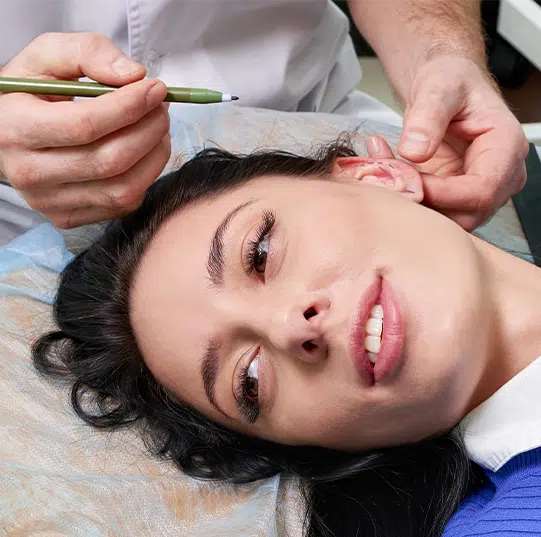
Surgeons usually perform otoplasty in outpatient facilities. Depending on the nature and complexity of the surgery, it may take between 1 to 3 hours. The steps of the surgery include:
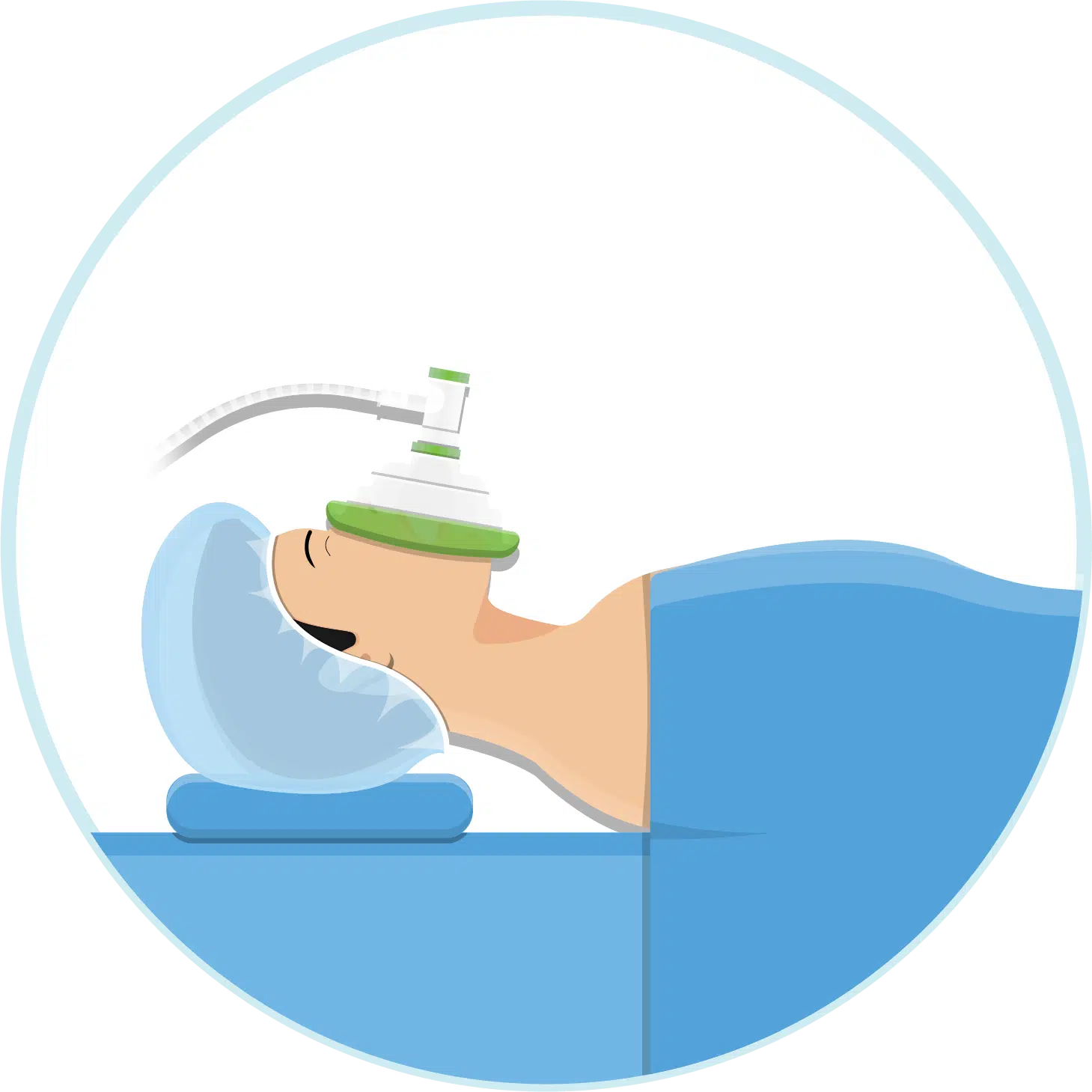
Both adults and older kids can receive a local anesthetic along with a sedative to prevent pain and discomfort. However, general anesthesia is the right option for many cases, especially for younger children.
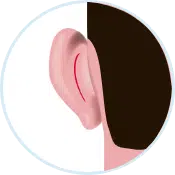
The length and nature of the surgical incision depend on the type of otoplasty you’re having. In general, otoplasty entails making an incision either inside the ear folds or on the back of the ear.
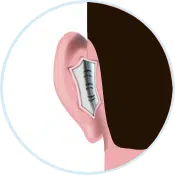
Next, your surgeon starts removing some cartilage or skin and contouring the remaining cartilage by using permanent sutures. Sometimes, surgeons need to graft more cartilage to the ear.
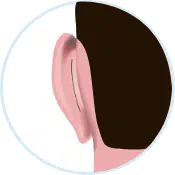
Finally, your surgeon seals the wounds with stitches and wraps a bandage around your head.
Otoplasty is generally a safe procedure, and most patients get the results they want. However, like any other surgery, ear reshaping carries potential risks and side effects, such as:
International Clinics helps international patients access affordable, high-quality medical and aesthetic procedures in Turkey.
Our team of consultants is here to answer your questions and provide guidance throughout your treatment journey.
Our partner hospitals and clinics have successfully performed thousands of procedures for patients from Europe, Asia, North America, and the Middle East.
Use the contact forms on our website to request a free consultation with our team. We’re ready to help you get the care you need.

Both general and local anesthesia will prevent pain during surgery. You may feel a little tired afterward, but your doctor should prescribe some pain medication anyway.
– Ear pain
– Itching
– Skin redness
– Bruising
– Swelling
– Scars behind or inside the ears
– Numbness or tingling
Otoplasty is safe as long it is performed by an experienced surgeon.
Otoplasty is an effective way to improve the shape or size of the ears. The results do not change with time.
Modifying the ear shape without surgical intervention is possible. This may happen by using an ear splint, which is suitable for newborns up to 6 months only.
